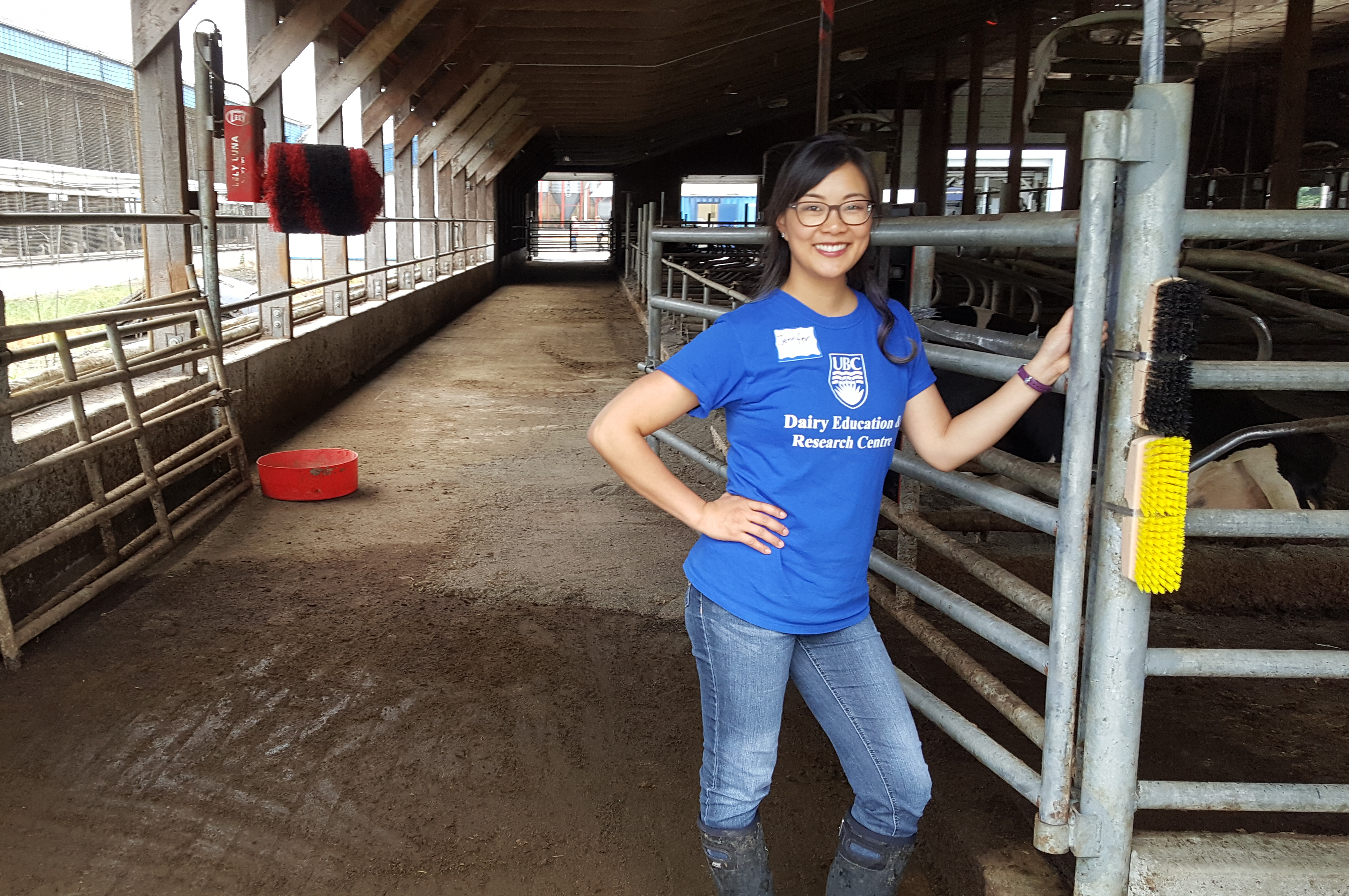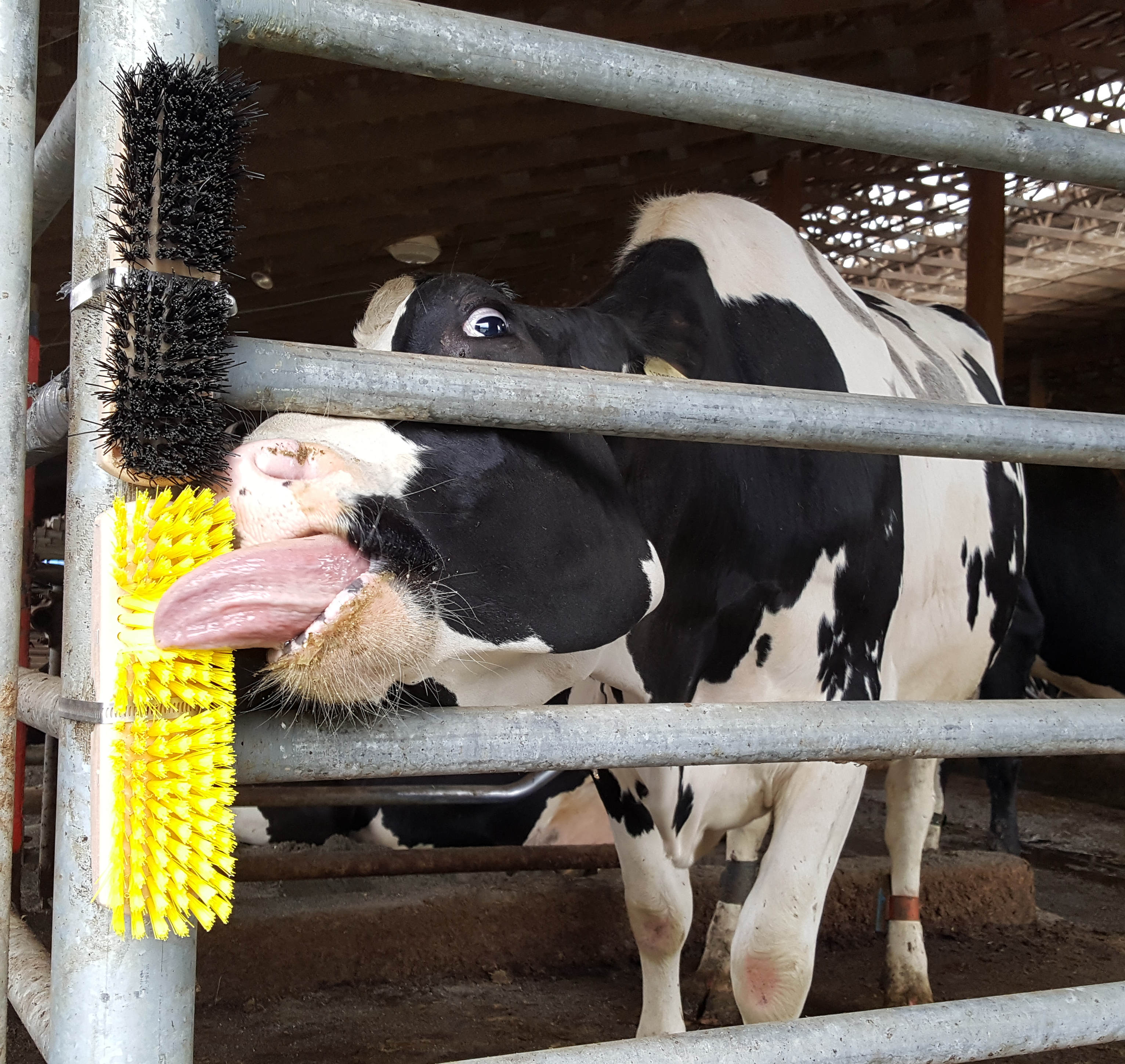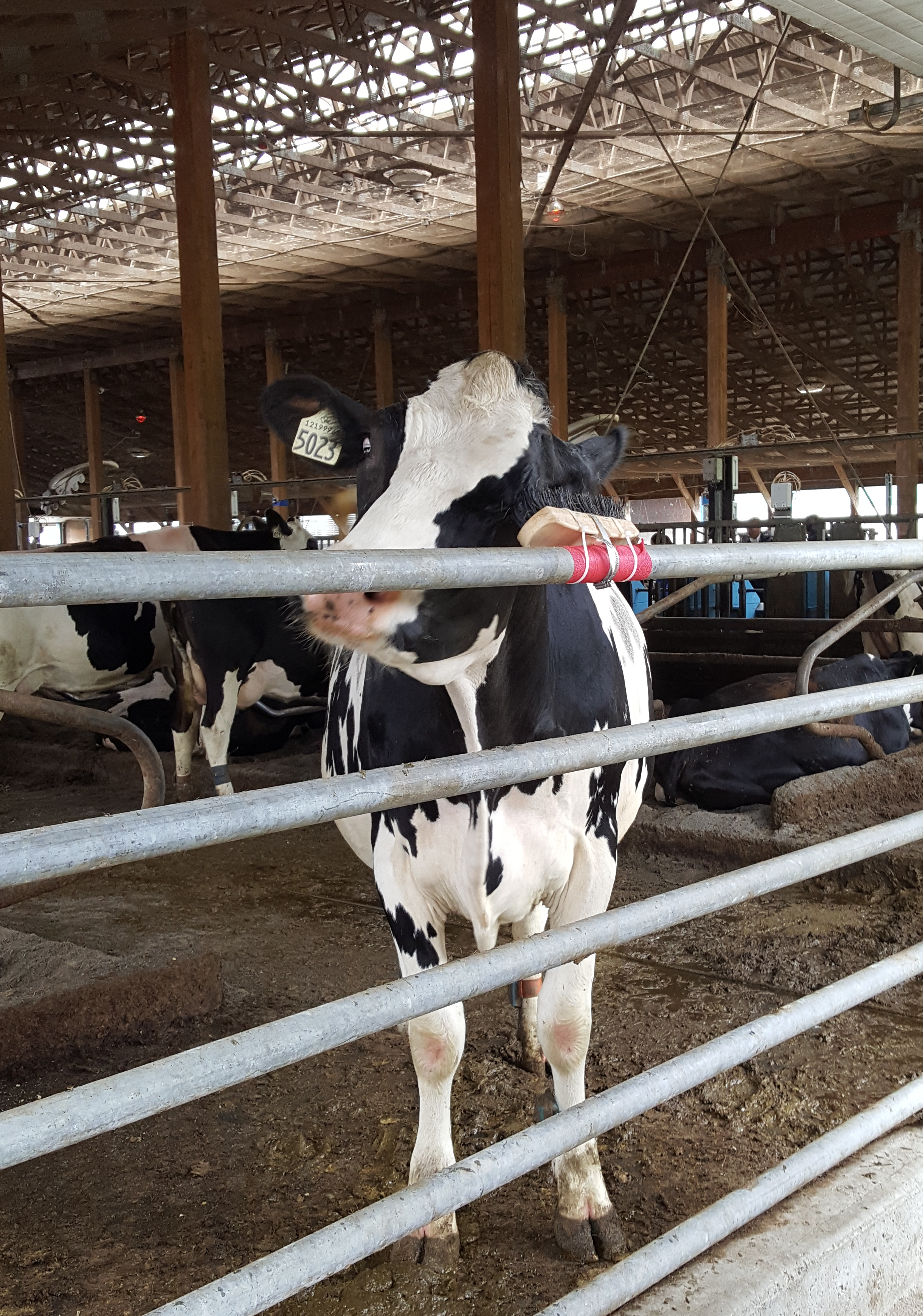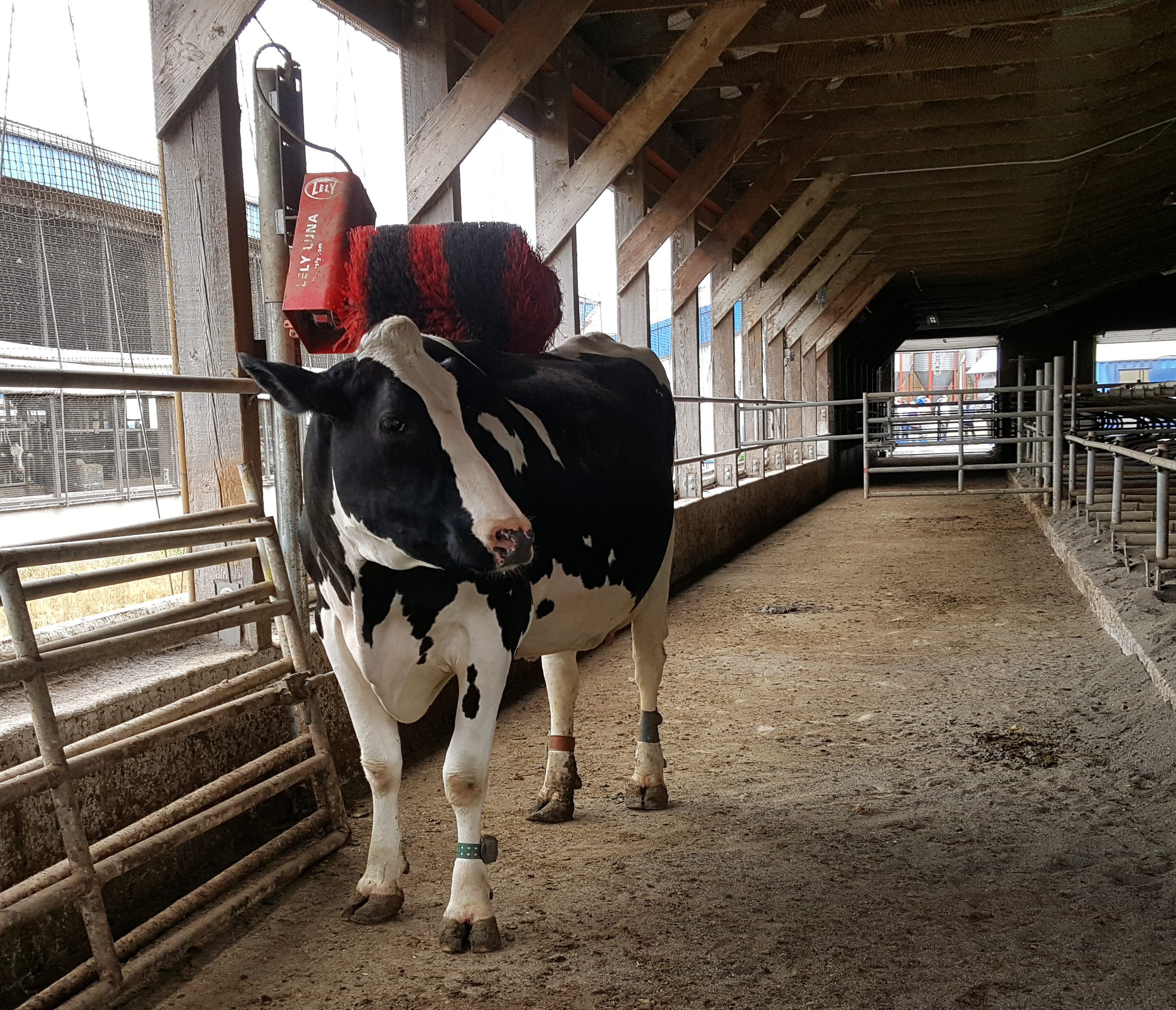Brushing up on dairy farming
Last Saturday was the annual open house at the UBC Dairy Education & Research Centre. Despite the light rain, we got an estimated 870 visitors, many on bicycle! In addition to drinking free chocolate milk, our guests learned about dairy farming and research on animal welfare, reproduction, and nutrient management.
Along with UBC honors undergraduate student Savannah Goldstein and PhD student Ana Carolina Moncada, I talked with our visitors about grooming behavior and brush use by dairy cattle.
Previous research has shown that grooming is an important natural behavior for cattle. Grooming behavior includes licking or scratching themselves, licking each other to form and maintain social bonds, and rubbing against objects such as trees, fences, or other surfaces indoors. When cows are given access to brushes, they spend more time grooming themselves, especially on otherwise hard-to-reach spots such as around the tail. Most research has focused on adult cows, and an increasing number of farms invest in automated rotating mechanical brushes.
Non-rotating brushes for heifers
Savannah and I are currently conducting 2 experiments with weaned heifers about 5 months old. We are giving the heifers small, non-rotating grooming brushes, which are in fact scrub brushes from the hardware store costing $18-20 CAD ($14-16 USD) each.
For Savannah’s thesis project, we are evaluating the heifers’ preferences for brushes mounted on the wall of the lying area in their pen, which is an open space with deep sawdust bedding. We are comparing how much the heifers use brushes with different orientations and bristle stiffness levels: stiff (similar to a dandy brush for horses) vs. extra-stiff (like those on the rotating cow brushes).
In our other study, we are investigating whether mounting brushes inside the freestalls can encourage heifers to lie down correctly when they first move into that type of housing system. With freestall housing, the idea is for cows to lie down in a stall such that manure falls into the alley and doesn’t dirty the bedding. However, heifers and cows sometimes lie down backward or in the manure alley instead. So far our results show promise, and visiting McGill University undergraduate Jessica St-Pierre is considering trying this strategy on her family’s dairy farm in Quebec!



Rotating brushes for cows
Ana, a PhD student and veterinarian from Colombia, is currently running a study with a rotating mechanical brush. She is investigating how mange, resulting from mite infestations, affects how much cows want to use the brush. Mites tend to dwell around the tailhead (where the tail meets the body), which is a difficult place for cows to reach and groom themselves. A mechanical brush can help cows relieve itchiness in that area of their body. To evaluate how important a resource – such as a brush – is to animals, we can ask them to pay a price. But the price involves performing a task or overcoming an obstacle instead of paying money. For her experiment, Ana has trained cows to push a gate to get access to the brush, and she can increase the “price” by adjusting the force needed for cows to open the gate.

Check out this video clip I put together of some of the cows using the rotating brush in a variety of ways during the open house:
- on the tailhead, where mange tends to occur
- under the tail (a couple visitors joked it was like cow TP!)
- on the head (doubling as a punching bag!)
[youtube https://www.youtube.com/watch?v=6Mq5MSTOHIE&w=560&h=315]
This article was posted in Uncategorized.